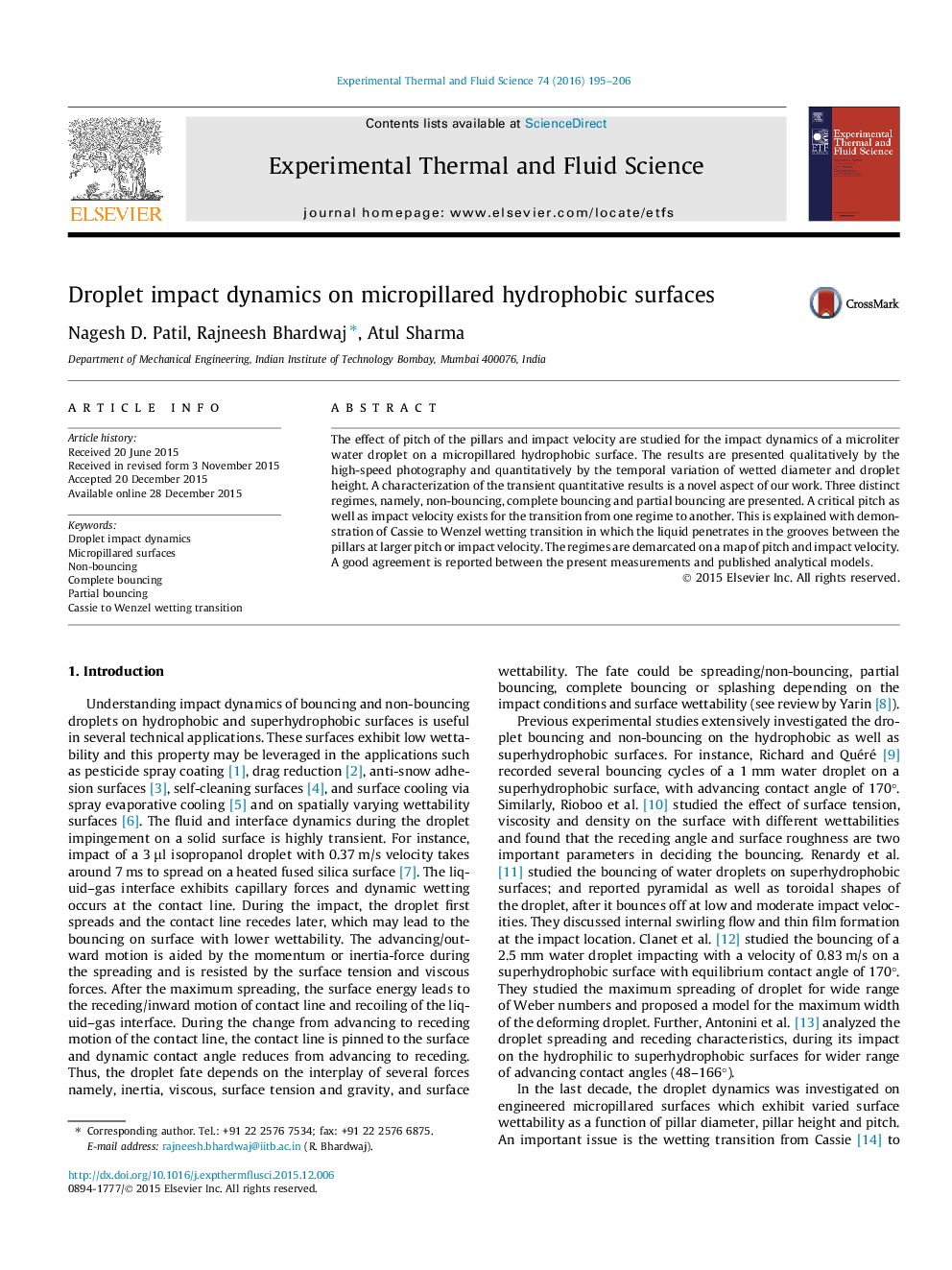| Article ID | Journal | Published Year | Pages | File Type |
|---|---|---|---|---|
| 651197 | Experimental Thermal and Fluid Science | 2016 | 12 Pages |
•Droplet impact dynamics on micropillared surfaces is investigated experimentally.•Effects of pitch of pillars (P) and impact velocity (U0) are studied.•Three regimes are reported: Non-bouncing, complete bouncing and partial bouncing.•A critical P as well as U0 is found for transition from bouncing to non-bouncing.•Cassie to Wenzel wetting transition is quantified by time-varying wetted diameter.
The effect of pitch of the pillars and impact velocity are studied for the impact dynamics of a microliter water droplet on a micropillared hydrophobic surface. The results are presented qualitatively by the high-speed photography and quantitatively by the temporal variation of wetted diameter and droplet height. A characterization of the transient quantitative results is a novel aspect of our work. Three distinct regimes, namely, non-bouncing, complete bouncing and partial bouncing are presented. A critical pitch as well as impact velocity exists for the transition from one regime to another. This is explained with demonstration of Cassie to Wenzel wetting transition in which the liquid penetrates in the grooves between the pillars at larger pitch or impact velocity. The regimes are demarcated on a map of pitch and impact velocity. A good agreement is reported between the present measurements and published analytical models.
Graphical abstractVarious droplet impact dynamics regimes – for impact of microliter water droplet – with increasing pitch of the pillars and impact velocity; obtained by high-speed visualization.Figure optionsDownload full-size imageDownload as PowerPoint slide
